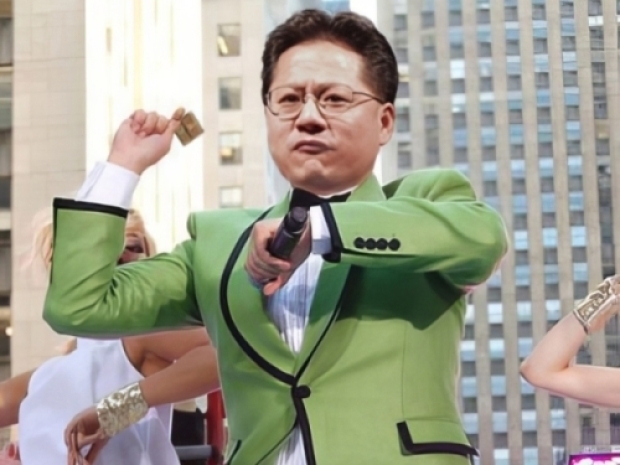Troubled by connectivity headaches, overheating GPUs, and leaking liquid coolers, Nvidia’s GB200 rack shipments had been dragging. Now that Foxconn, Inventec, and Wistron have ironed out the issues, the kit is moving.
The fixes are timely for Nvidia chief executive Jensen Huang, who had promised that Blackwell would supercharge the computing grunt needed for large language models when he first showed it off last year.
Production had been snarled at the end of 2024, putting Nvidia’s annual sales targets at risk and leaving analysts wondering whether the company's server dreams were coming unstuck.
One engineer at a partner manufacturer admitted: “Our internal tests showed connectivity problems . . . the supply chain collaborated with Nvidia to solve the issues, which happened two to three months ago.”
The GB200 AI rack has 36 Grace CPUs and 72 Blackwell GPUs, all stitched together with Nvidia’s NVLink system, which sounds lovely until you consider the technical gremlins that plagued the rollout.
At the Computex bash in Taipei, Foxconn, Inventec and Wistron confirmed that GB200 shipments began limping out at the end of Q1. Production is now picking up speed.
Analysts reckon the delays came from Nvidia throwing too many processors into the soup too quickly. SemiAnalysis analyst Chu Wei-Chia said: “This technology is really complicated. No company has tried to make this many AI processors work simultaneously in a server before, and in such a short timeframe.”
“Nvidia had not allowed the supply chain sufficient time to be fully ready, hence the delays. The inventory risk around GB200 will ease off as manufacturers increase rack output in the second half of the year,” he added.
Nvidia's AI toys are now drawing attention from further afield, with Saudi Arabia and the United Arab Emirates reportedly ordering thousands of chips during Donald Trump’s Gulf roadshow. Clearly, sovereign tech is the next battleground.
Meanwhile, engineers spent months faffing about with cooling failures and software bugs. With 72 heat-spewing GPUs in each box, overheating was always going to be a problem, but leaky liquid coolers and dodgy chip syncing only added to the headache.
To calm nerves at outfits like Microsoft and Meta, suppliers have dialled up their testing regimes to catch faults before the gear hits the racks.
In the midst of all this, Nvidia is also trying to get its next act together. The GB300 rack, its next-gen AI toy, is set for launch in the third quarter and promises better memory and support for trickier AI models like OpenAI’s 01 and DeepSeek R1.
But even that plan has been tweaked. Nvidia originally wanted to roll out a new chip layout, Cordelia, allowing individual GPUs to be replaced. Then in April, it changed its mind and went back to the Bianca design from the GB200, after partners flagged installation snafus.
Going back to Bianca may not look clever, but it helps the firm push more product out the door. In February, Nvidia had already told the analysts that it expected to rake in around $43 billion in sales for the quarter ending April, which would be up around 65 per cent year on year.
The Cordelia design might have offered fatter margins and easier customer maintenance. It’s not dead yet, though. Nvidia has told suppliers that Cordelia will reappear in future chip iterations.
On another front, Nvidia’s China headaches are costing it dear. The US government’s ban on its H20 chips means the firm is writing off $5.5 billion in inventory and purchase commitments.
Bank of America analyst Vivek Arya reckons the China mess will push Nvidia’s gross margins for the quarter down to 58 per cent from the 71 per cent the company had previously flagged. But he thinks reverting to Bianca might save Nvidia’s bacon: “A faster than expected rollout of Blackwell due to the company reverting back to Bianca boards could help offset the China revenue hit in the second half of the year.”




